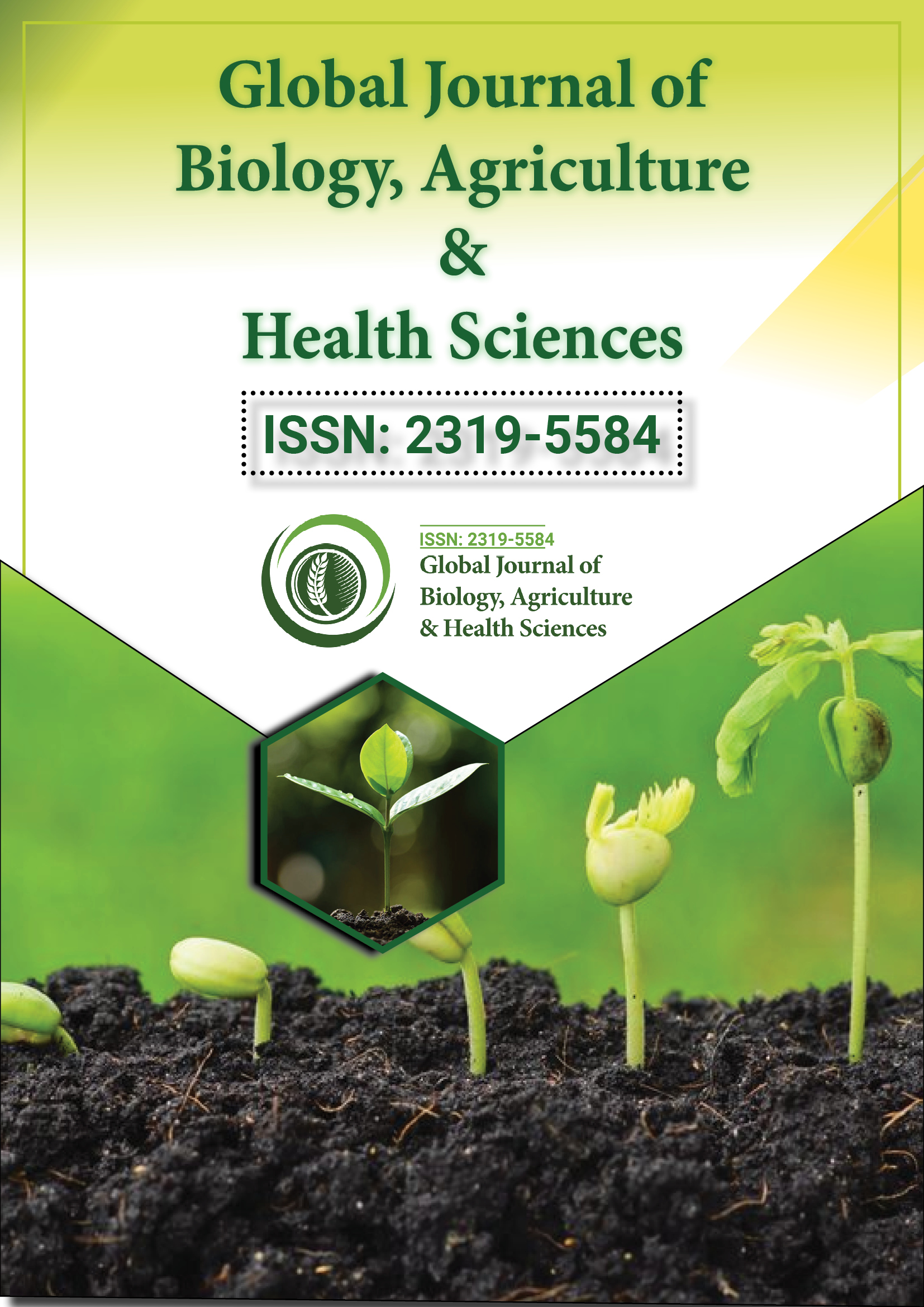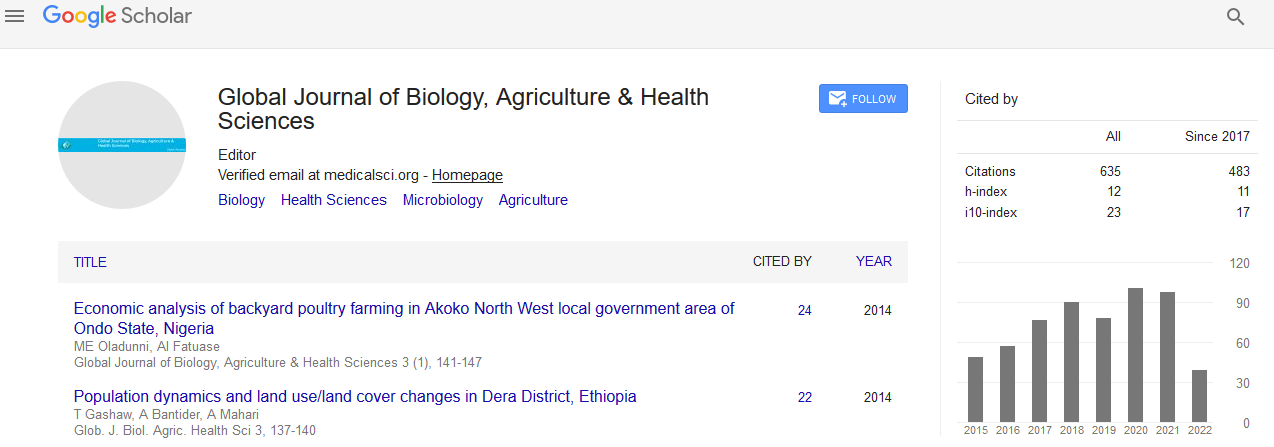Indexed In
- Euro Pub
- Google Scholar
Useful Links
Share This Page
Journal Flyer

Open Access Journals
- Agri and Aquaculture
- Biochemistry
- Bioinformatics & Systems Biology
- Business & Management
- Chemistry
- Clinical Sciences
- Engineering
- Food & Nutrition
- General Science
- Genetics & Molecular Biology
- Immunology & Microbiology
- Medical Sciences
- Neuroscience & Psychology
- Nursing & Health Care
- Pharmaceutical Sciences
Commentary - (2025) Volume 14, Issue 2
Influence of Air Pollution on Urban Respiratory Health Patterns
Elena Novak*Received: 26-May-2025, Manuscript No. GJHABS-25-29940; Editor assigned: 28-May-2025, Pre QC No. GJHABS-25-29940 (PQ); Reviewed: 11-Jun-2025, QC No. GJHABS-25-29940; Revised: 18-Jun-2025, Manuscript No. GJHABS-25-29940 (R); Published: 25-Jun-2025, DOI: 10.35248/2319-5584.25.14.252
Description
Urban environments around the world are facing growing challenges related to air pollution. As cities expand and industrial activities increase, concentrations of airborne pollutants have reached levels that significantly affect respiratory health. While air pollution is a global concern, its health impact is particularly noticeable in densely populated urban centers where millions of individuals are exposed daily to a mixture of harmful particles and gases.
The major air pollutants affecting respiratory systems include particulate matter (PM), nitrogen dioxide (NOâ??), sulfur dioxide (SOâ??), ozone (Oâ??), and carbon monoxide (CO). Particulate matter, especially fine particles less than 2.5 microns (PM), penetrate deep into the lungs and even enter the bloodstream. These particles originate from vehicle emissions, industrial activities, construction dust, and burning of fossil fuels and biomass. Gaseous pollutants, depending on concentration and exposure time, contribute to airway irritation, inflammation, and reduced lung function.
Respiratory conditions such as asthma, bronchitis, chronic obstructive pulmonary disease (COPD), and even acute respiratory infections show strong associations with air quality. Hospital admission rates and emergency room visits tend to increase on days when pollution levels spike. For vulnerable populations children, elderly individuals, and those with preexisting respiratory conditions effects can be immediate and severe. Studies across Europe, Asia, and Latin America show that children exposed to high levels of PMâ??.â?? experience reduced lung growth and increased prevalence of wheezing and shortness of breath.
Mechanisms through which pollutants affect health are varied. Fine particles, once inhaled, stimulate oxidative stress and inflammation. This leads to increased mucus production, narrowing of airways, and disruption of normal gas exchange. Gaseous pollutants like NOâ?? aggravate airways, making them more sensitive to allergens and infectious agents. In the long term, repeated exposure contributes to lung tissue damage and can reduce respiratory efficiency even in previously healthy individuals.
Temperature inversions and urban heat islands can worsen pollution concentration by preventing vertical dispersion of pollutants. In cities with poor air circulation or where high-rise buildings trap emissions at lower altitudes, pollution remains concentrated near ground level where people breathe. Moreover, urban residents are often exposed to multiple sources at once traffic emissions, household heating, industrial smoke, and even indoor pollution from cooking stoves or tobacco smoke.
Social factors influence vulnerability to pollution. Low-income communities often reside closer to industrial zones or hightraffic roads, increasing exposure. Access to healthcare also varies, meaning symptoms may go untreated or be managed inadequately. In many cities, monitoring infrastructure is limited, and residents may not be aware when air quality is poor. This leads to continued outdoor activity during hazardous pollution periods.
Mitigating the impact of air pollution on respiratory health involves multiple strategies. Urban planning must incorporate green spaces which help absorb pollutants and provide buffer zones. Encouraging use of public transport, walking, and cycling, alongside investments in cleaner vehicle technology, can reduce emissions. Transitioning from coal or diesel power to renewable sources can help lower overall emissions, while enforcing emission standards for industries and vehicles ensures compliance.
Air pollution remains a significant public health issue in cities. Its effects on respiratory health are well-documented and widereaching. By addressing pollution sources, improving monitoring, strengthening healthcare response, and raising awareness, cities can work toward improving respiratory health outcomes for their populations. Coordinated action across sectors transportation, energy, health, and urban planning is necessary to reduce the burden of pollution-related respiratory diseases in the urban environment
Conclusion
Crop science is a multidisciplinary field dedicated to understanding and improving crop production systems. By integrating plant biology, genetics, soil science, pest management, and sustainable practices, crop scientists aim to increase agricultural productivity while preserving environmental health. The knowledge generated through crop science is vital for addressing global challenges such as food security, climate change, and rural poverty. As agricultural demands evolve, continued innovation and collaboration in crop science will be essential to feeding the world sustainably and equitably.
Citation: Novak E (2025). Influence of Air Pollution on Urban Respiratory Health Patterns. Glob J Agric Health Sci. 14:252.
Copyright: © 2025 Novak E. This is an open-access article distributed under the terms of the Creative Commons Attribution License, which permits unrestricted use, distribution and reproduction in any medium, provided the original author and source are credited.

